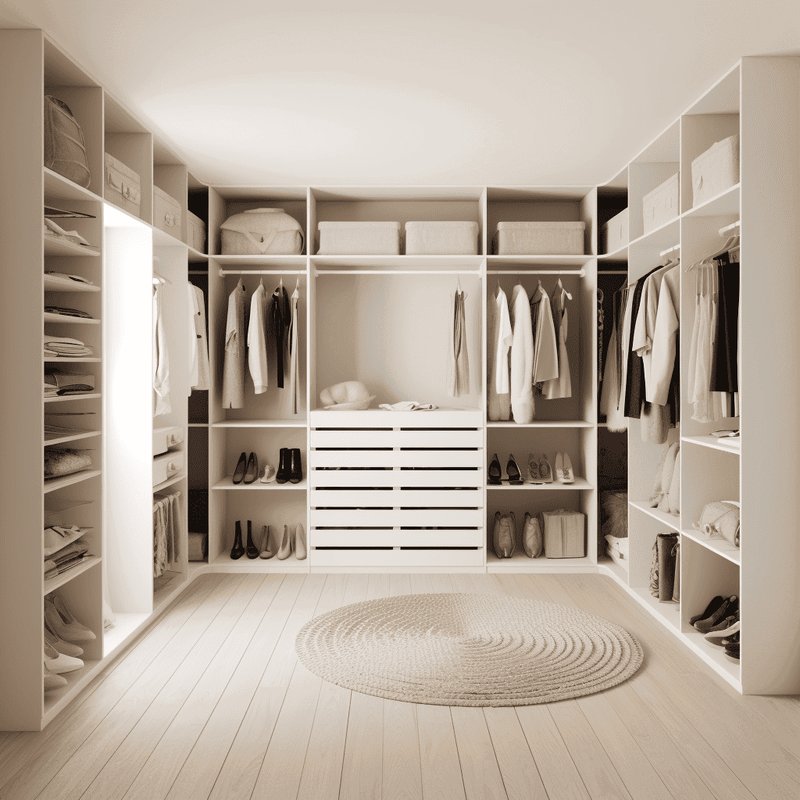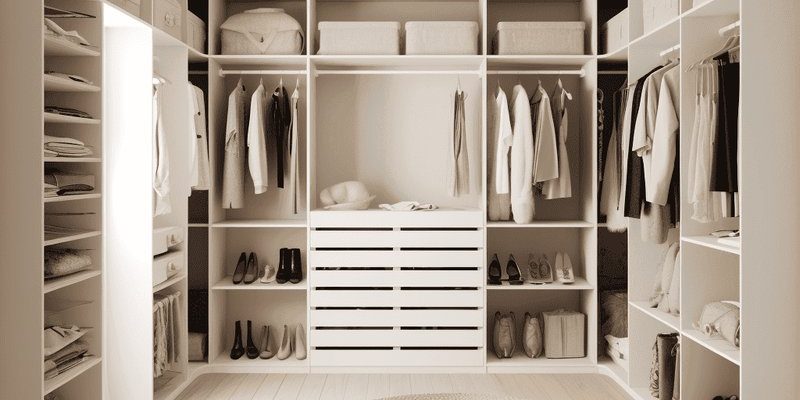
Now, with so many options available, where do you even begin? Whether you’re opting for sleek handles, classic knobs, or modern sliding mechanisms, knowing what hardware suits your needs will make all the difference. Let’s break down the essential considerations to help you make informed decisions while selecting hardware for your walk-in closet doors.
Consider the Type of Door
The first step in choosing hardware for your walk-in closet doors is understanding the type of door you have. Are you working with conventional hinged doors, or are you leaning towards sliding doors? Each type has its pros and cons.
Hinged Doors
Hinged doors are the most common choice, often allowing for a full swing open. This type generally requires a door handle or knob and hinges. You’ll want to select hardware that complements your closet’s decor. For example, if your closet features a classic design, ornate knobs may work best, while sleek, minimalist handles might suit modern spaces.
Sliding Doors
On the other hand, if you’re short on space or want a contemporary look, sliding doors could be the answer. They typically use a track system and may only need a simple pull handle. This hardware is often less conspicuous, allowing for a clean, streamlined appearance. However, consider that sliding doors might not offer full visibility into your closet when closed.
Material Matters
Once you know the type of door, think about materials. The hardware’s material is crucial since it will affect durability, style, and maintenance. Common materials include metal, wood, and plastic.
Metal Hardware
Metal options like stainless steel or brass can offer a polished, modern look and are highly durable. They’re resistant to wear and tear, making them a solid choice if your closet is used frequently. Think about a brushed finish for a contemporary feel or a polished finish for something more traditional.
Wood Hardware
If your closet features wooden doors, consider matching the hardware with the wood species for a cohesive look. Wooden knobs or handles can add warmth and texture but may require more maintenance over time.
Plastic Hardware
Plastic is usually the most budget-friendly option and comes in various styles and colors. However, it may not offer the same durability as metal or wood. Ensure you choose high-quality plastic if you go this route.
Style and Design
Choosing hardware isn’t just about function; it’s also about how it looks. The style of your hardware should complement the overall aesthetic of your closet.
Traditional vs. Modern
A traditional walk-in closet might benefit from ornate, vintage-inspired hardware, adding a touch of elegance. In contrast, a modern design could use simple, geometric shapes that create a clean line. When selecting hardware, think about the overall vibe of your closet and how you want it to feel.
Finishes
Finishes can also make a big difference in style. Consider whether you want a shiny look, a matte finish, or something brushed. Each finish has its character and will interact differently with light. A brushed nickel finish, for example, can add a sophisticated, contemporary touch, while antique bronze may evoke a warmer, more traditional feel.
Functionality and Ease of Use
When selecting hardware, functionality is paramount. You want something that’s easy to use and suits the closet’s purpose.
Ergonomics
Make sure that whatever handles or knobs you select are comfortable to use. For instance, if you have a lot of items in your walk-in closet, a larger handle can make opening the door easier, especially if your hands are full.
Locking Mechanisms
If privacy is a concern—especially in shared spaces—you might want to consider a locking mechanism. This feature can add an extra layer of security, ensuring that your personal items remain private.
Budget Considerations
Before diving into your search for the perfect hardware, it’s wise to set a budget. Hardware can vary widely in price, and knowing your limits will help you make smarter choices.
Cost vs. Quality
While it might be tempting to opt for cheaper options, remember that quality matters. Investing a little more upfront can save you money in the long run, as higher-quality hardware usually lasts longer and performs better. Make sure to balance your budget with your needs and the longevity of the hardware.
DIY Installation
If you’re handy, consider that many types of hardware can be installed easily on your own. This can save you installation costs. However, if you’re unsure, it might be worth hiring a professional to ensure everything is fitted correctly.
Installation Tips
Once you’ve chosen your hardware, the next step is installation. Here are some tips to ensure everything goes smoothly.
Gather Tools
Before you start, gather all necessary tools: a screwdriver, measuring tape, and a level. Having everything on hand will make the process faster.
Measure Twice, Install Once
Always double-check your measurements before drilling any holes. This can prevent mistakes that lead to misalignment. It’s often best to mark the spot for your knobs or handles lightly with a pencil first before attaching them.
Follow Instructions
If your hardware comes with installation instructions, be sure to follow them closely. Every piece of hardware may have specific requirements, especially for locks or sliding mechanisms.
Final Thoughts on Selecting Hardware for Walk-In Closet Doors
Selecting hardware for interior doors in walk-in closets is more than just a practical decision; it’s also about enhancing the overall aesthetic and functionality of your space. By considering door type, materials, design, and installation, you can create a beautifully organized closet that reflects your personal style.
Take your time with each choice, and don’t hesitate to explore different options. Remember that the right hardware will not only serve its purpose but will also add that extra touch of character to your closet. Happy decorating!
